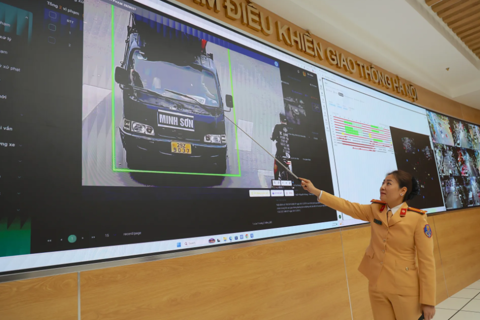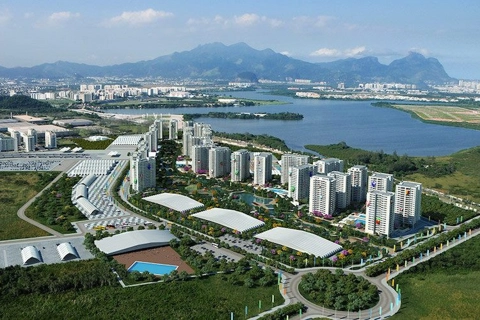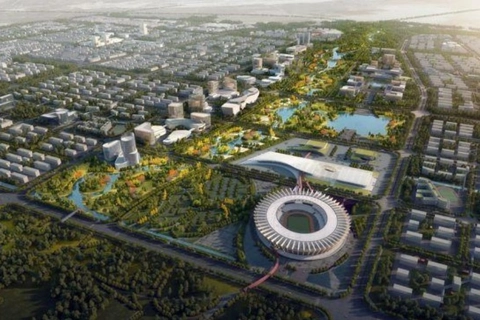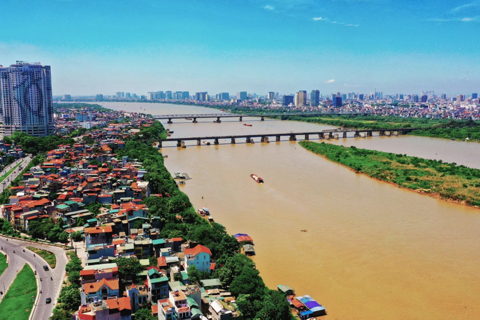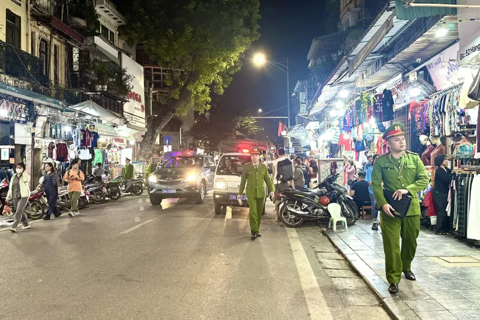Hanoi
One Pillar - the temple with unique architecture
Jan 06, 2019 / 11:12 AM
The pagoda was recognized as the first national historical-cultural monument in 1962. It is also chosen as one of the symbols of Hanoi capital.
The One Pillar Pagoda, formally “Diên Hựu tự” or “Liên Hoa Đài” is a historic Buddhist pagoda in Hanoi, Vietnam. It is regarded, alongside the Perfume Pagoda, as one of Vietnam's two most iconic pagodas.
The pagoda was built by Emperor Ly Thai Tong in the first year of Sung Hung Dai Bao, in the winter of October (Lunar Calendar) in 1049.
According to the Book of Hanoi-Historical Relics and Sceneries, the epitaph was built in the third Canh Tri (1665) under the reign of Emperor Le Huyen Tong, by monk Le Tat Dat. At the position of One Pillar Pagoda today, under the Tang Dynasty in China, a pillar was erected in the middle of a square lake. Emperor Ly Thai Tong often came to pray. He remodeled the pagoda, built another one next to the One Pillar Pagoda (10m to the southwest) and named the whole pagoda complex as “Diên Hựu tự”, which means "long lasting blessings".
In 1954, the French Expeditionary Force, before withdrawing from Hanoi, blew up One Pillar Pagoda by placing landmines. After taking over the capital, the Ministry of Culture of the Democratic Republic of Vietnam did a huge restoration work and rebuilt the Dien Huu Pagoda and the One Pillar Pagoda following the old architecture.
The One Pillar Pagoda is located on a stone pillar in the middle of the small lake of Linh Chieu full of lotus flowers, evoking the image of a lotus flower stretching out in the pond. The One Pillar Pagoda was the result of the restoration in 1840-1850 and 1922. Dai Lien Hoa was repaired in 1955 by architect Nguyen Ba Lang.
The One Pillar Pagoda currently consists of square towers of three-meter in width, four-meter-high curved roof, (not including the submersible part) and 1.2m in diameter. The top of the column is a system of wooden beams to support the tower above.

In the Vietnamese conception, the dragon is always a sacred mascot, symbolizing power. And the image of the "Luong long chau nguyet" (two dragons attending the moon) on the roof not only symbolizes divine power but also implies the human values, intellectual reflection, human aspirations and ancient civilization. Ponds are circled with railing made of glazed green brick. The architecture of the pagoda is characteristics of the post-Le dynasty.
In the temple’s garden, there is a bodhi tree from the Buddha, presented by President Rajendra Prasad on the occasion of President Ho Chi Minh's visit to India in 1958.

On May 4, 2006, the Vietnam Records Organization recognized the pagoda as "Vietnam Record" and nominated to the Asian Records Organization. In 2012, at Faridabad (India), the Asian Records Association acknowledged the pagoda as the Asia Record, "The most unique architectural monument" for the One Pillar Pagoda.
The pagoda was recognized as the first national historical-cultural monument in 1962. It is also chosen as one of the symbols of Hanoi capital.

The One Pillar Pagoda is one of the symbols of Hanoi capital
|
According to the Book of Hanoi-Historical Relics and Sceneries, the epitaph was built in the third Canh Tri (1665) under the reign of Emperor Le Huyen Tong, by monk Le Tat Dat. At the position of One Pillar Pagoda today, under the Tang Dynasty in China, a pillar was erected in the middle of a square lake. Emperor Ly Thai Tong often came to pray. He remodeled the pagoda, built another one next to the One Pillar Pagoda (10m to the southwest) and named the whole pagoda complex as “Diên Hựu tự”, which means "long lasting blessings".
In 1954, the French Expeditionary Force, before withdrawing from Hanoi, blew up One Pillar Pagoda by placing landmines. After taking over the capital, the Ministry of Culture of the Democratic Republic of Vietnam did a huge restoration work and rebuilt the Dien Huu Pagoda and the One Pillar Pagoda following the old architecture.
The One Pillar Pagoda is located on a stone pillar in the middle of the small lake of Linh Chieu full of lotus flowers, evoking the image of a lotus flower stretching out in the pond. The One Pillar Pagoda was the result of the restoration in 1840-1850 and 1922. Dai Lien Hoa was repaired in 1955 by architect Nguyen Ba Lang.
The One Pillar Pagoda currently consists of square towers of three-meter in width, four-meter-high curved roof, (not including the submersible part) and 1.2m in diameter. The top of the column is a system of wooden beams to support the tower above.

In the temple’s garden, there is a bodhi tree from the Buddha, presented by President Rajendra Prasad on the occasion of President Ho Chi Minh's visit to India in 1958.

The pagoda was recognized as the first national historical-cultural monument in 1962. It is also chosen as one of the symbols of Hanoi capital.


